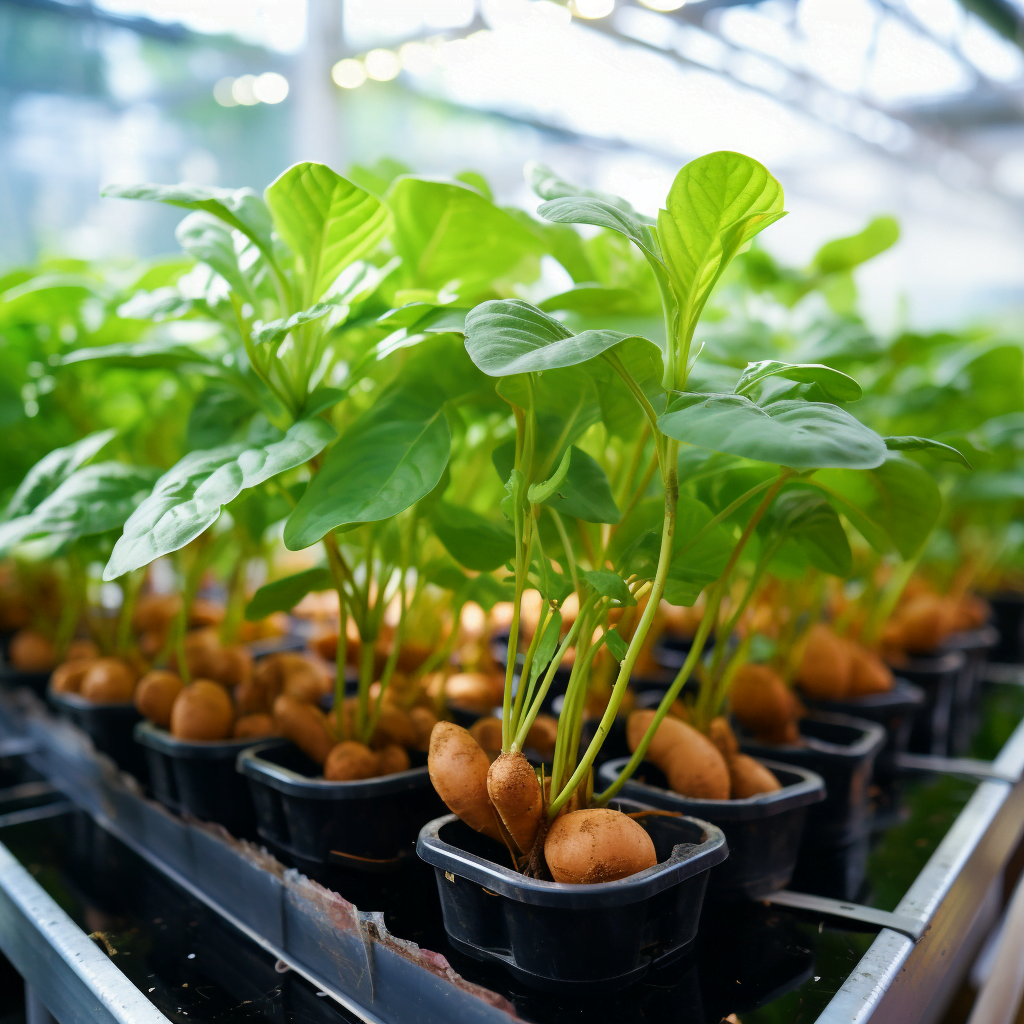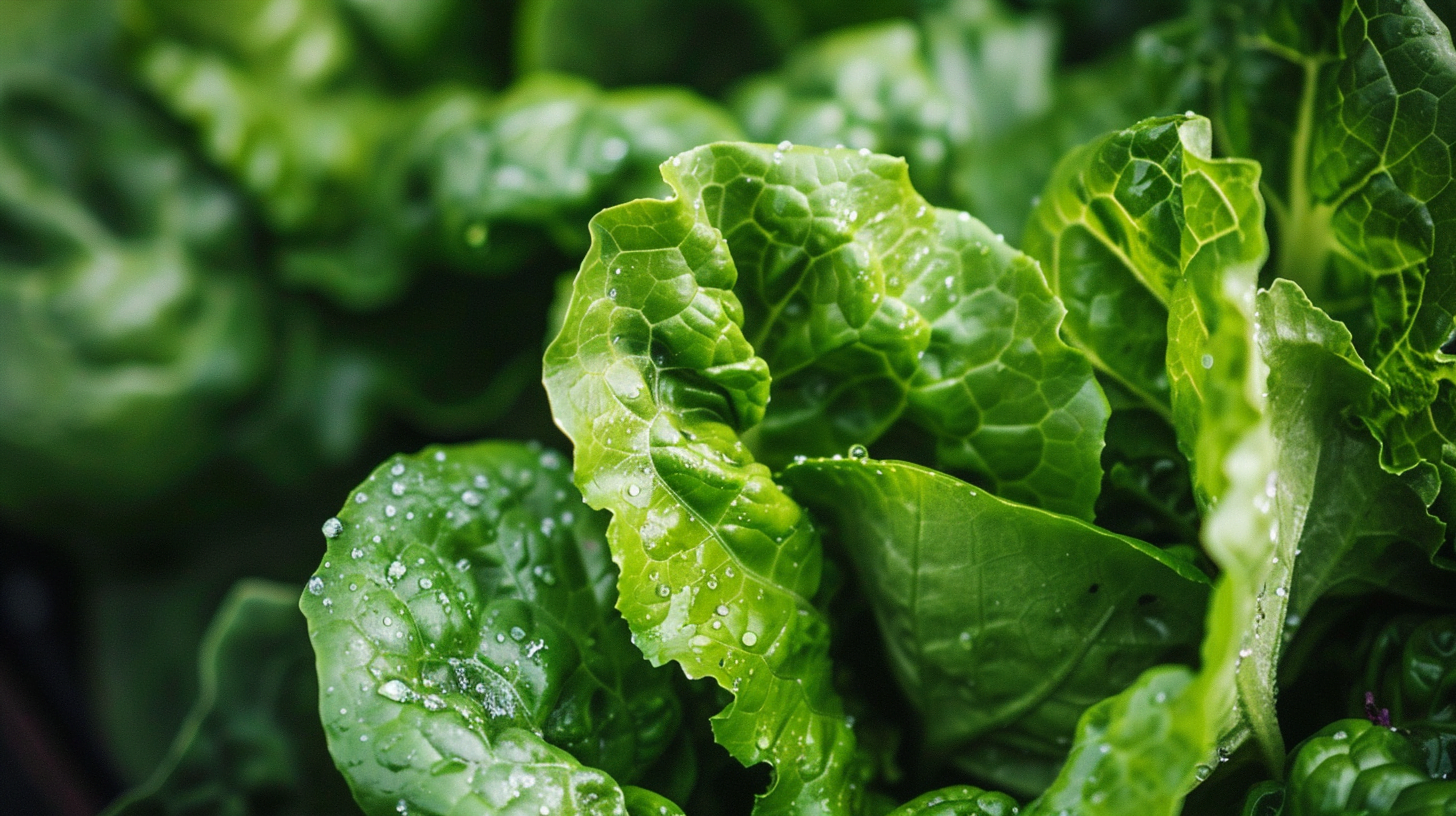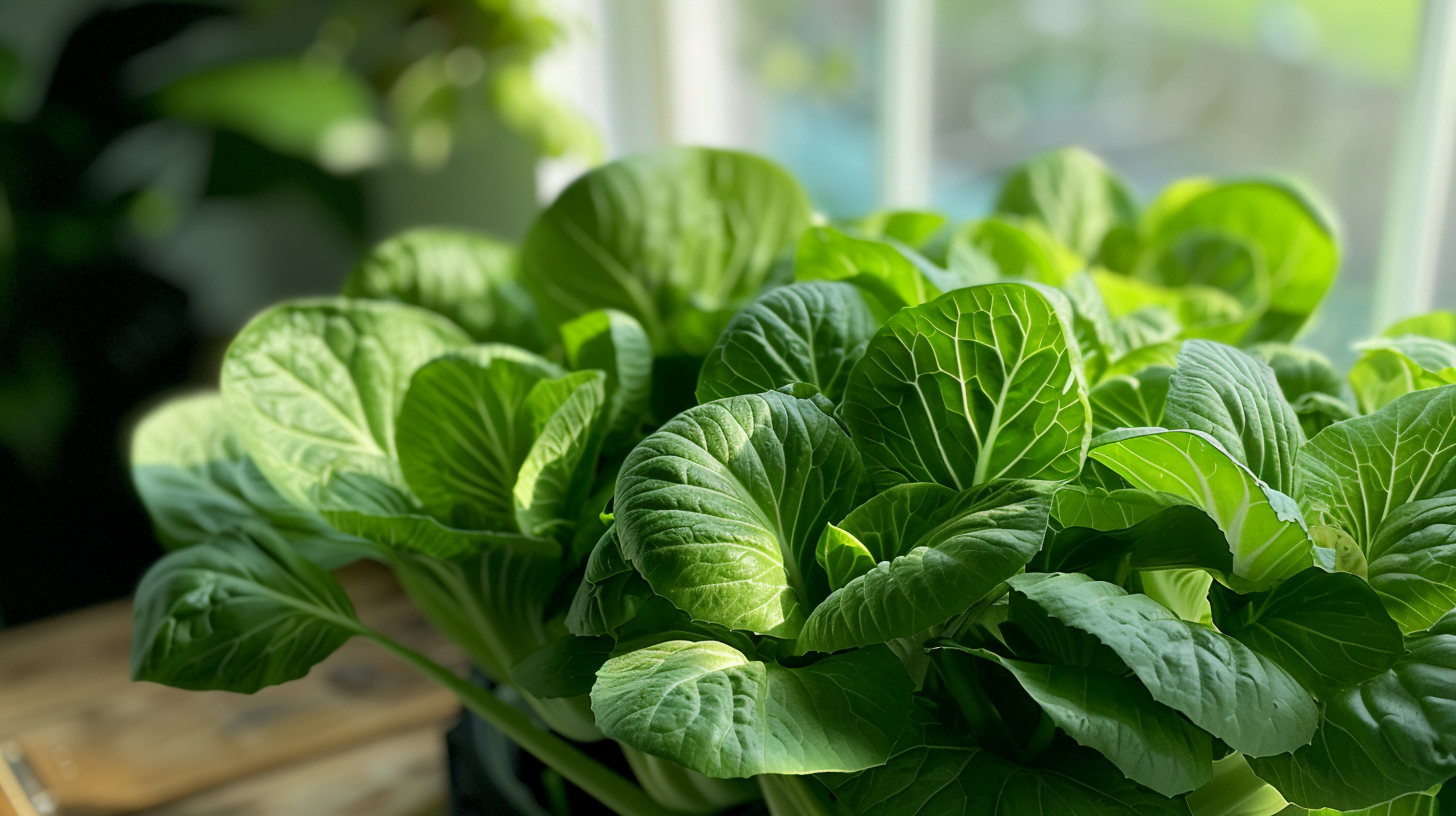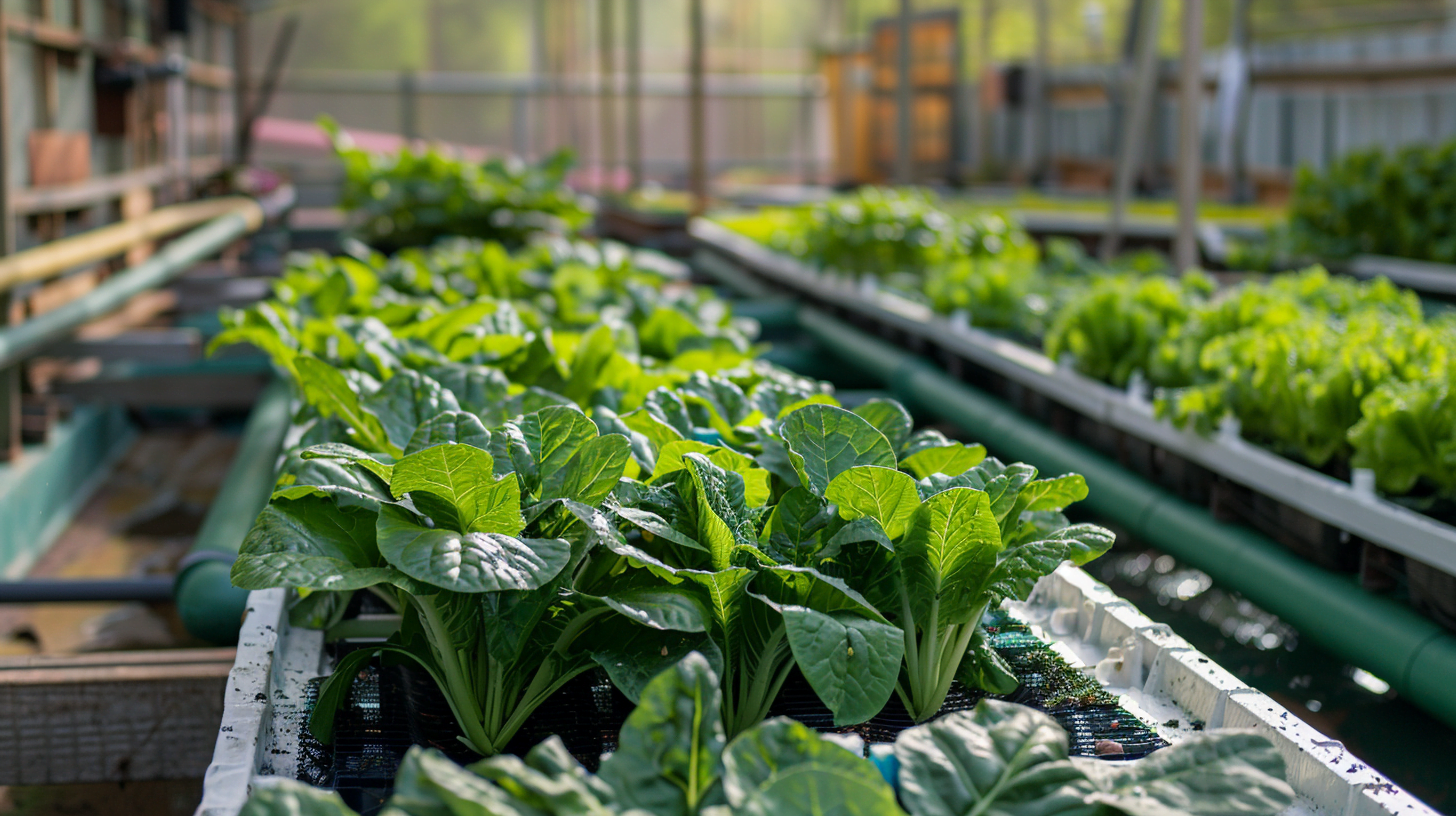Growing sweet potatoes hydroponically allows you to produce high yields of delicious, nutritious potatoes without the need for large amounts of space or soil. This comprehensive article on How to Grow Sweet Potatoes Hydroponically will walk you through everything you need to know to successfully grow sweet potatoes hydroponically, from choosing the right equipment to harvesting your crop.
Choosing the Right Hydroponic System
Selecting the optimal hydroponic system is a crucial first step for your sweet potato operation. There are several factors to consider when deciding which type of system to use:
Space Requirements
Sweet potato vines need ample room to spread out and grow. Each plant requires at least 16 square feet of grow space in your system. Account for this when designing your setup. Insufficient space will limit your yields.
Root Depth
Another key consideration is providing enough root zone depth for the potatoes to form and expand underground. Sweet potato tubers can grow quite large under the right conditions. aim for at least 12-16 inches of root zone in your system containers to accommodate the swelling tubers. Anything shallower will restrict growth.
Oxygenation
Proper oxygen levels are imperative for healthy root development and functioning. The hydroponic system you choose needs to be capable of maintaining dissolved oxygen (DO) concentrations of 6 ppm or higher. This is achieved through bubblers, air pumps, and circulation of the nutrient reservoir water.
Nutrient and Water Balance
The system must also provide the right balance of water and nutrients to the plants while keeping oxygen levels high. This is what makes deep water culture and nutrient film technique two of the best systems for hydroponically cultivating sweet potatoes.
Budget
Your budget is often a deciding factor as well. Basic home hydroponic setups like Dutch bucket systems or small grow tents can cost under $200. These are great for getting started on a small scale. Larger commercial-grade systems with dozens of plants quickly run into the thousands of dollars. Consider how much you want to invest as you select equipment.
Ease of Use
Some systems like aeroponics can be quite complex, requiring extensive monitoring and precision. Others like float rafts are very simple “set and forget” type systems. Match the system complexity with your level of growing expertise.
Scalability
Think about how much you aim to produce and choose a system that can expand accordingly. A small closet grow tent might suffice initially but lacks scalability for commercial production. Prioritize flexibility and room for growth when applicable.
Taking these factors into account, a deep water culture (DWC) system is usually the ideal choice for hydroponically growing sweet potatoes. DWC systems feature plants suspended above a reservoir of nutrient-rich water. An air pump bubbles the solution to maintain oxygenation. This provides an excellent balance of water, nutrients and airflow around the roots as they grow. DWC systems are also affordable and simple to operate.
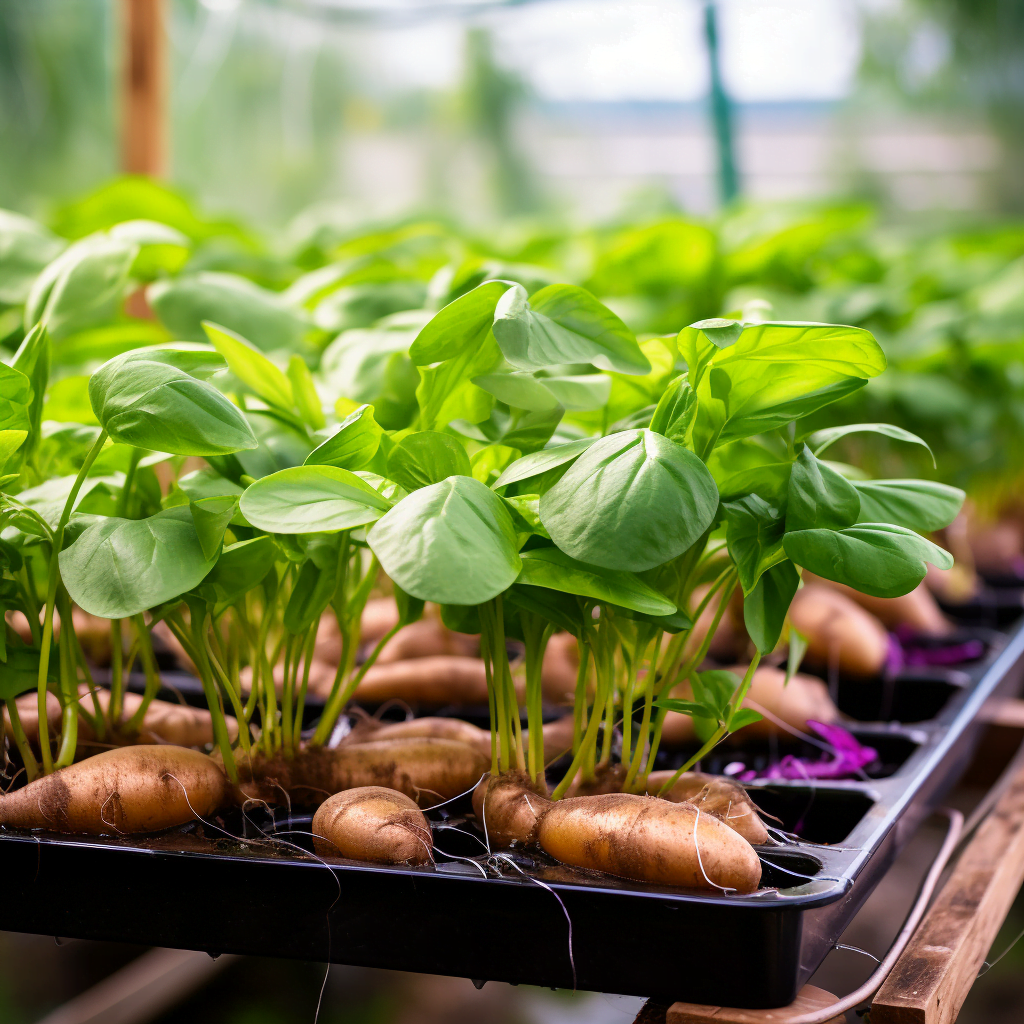
Selecting the Best Sweet Potato Varieties
While there are hundreds of different sweet potato cultivars, certain varieties perform better than others when grown hydroponically. Seek out these top recommended varieties:
Beauregard
The most widely grown commercial sweet potato variety. Beauregard produces very high yields of orange-fleshed sweet potatoes. It’s an excellent choice for hydroponic systems due to its rapid growth and prolific tuber production.
Georgia Jets
Another highly popular orange-fleshed variety ideal for hydroponic culture. Georgia Jets are early maturing and extremely prolific – each plant can produce 20 or more large tubers.
Bonita
This white-fleshed sweet potato grows well hydroponically and offers a sweeter, more moist texture than orange varieties. Bonita has a beautiful white skin and flesh. It’s perfect if you want a less starchy, milder sweet potato.
Murasaki
For a uniquely colored crop, try the Japanese Murasaki variety. Its purple skin and vibrant lavender-hued flesh provide an appealing color contrast. Murasakis also have a rich, complex flavor popular for baked goods and desserts.
Centennial
Centennials are large starchy orange-fleshed potatoes that grow very uniformly in shape and size. Their consistent sizing makes them a commercial favorite. This variety tolerates hydroponic conditions well.
No matter which cultivars you choose, always start with certified disease-free slips or cuttings sourced from reputable growers. Importing clean plant material prevents introducing pathogens into your hydroponic system.
Preparing Your Hydroponic System
After selecting the ideal hydroponic setup and sweet potato varieties, now it’s time to configure the system for optimal growing. Pay close attention to the following parameters:
Nutrient Solution
Sweet potatoes require relatively minimal nutrient levels compared to leafy greens or vining crops. Use a specialty hydroponic formula designed for fruiting vegetables. Recommended nutrient targets:
- Nitrogen – 150-200 ppm
- Phosphorus – 50-100 ppm
- Potassium – 225-300 ppm
- Calcium – 100-150 ppm
- Magnesium – 50-75 ppm
Purchase a quality brand name nutrient line and follow their sweet potato application guidelines. Having the proper balance of macro- and micronutrients encourages vigorous vine growth and large healthy tubers.
Electrical Conductivity
The total dissolved mineral salts in the water affect its electrical conductivity (EC). For hydroponic sweet potatoes, maintain EC between 2.0-3.0 mS/cm. Much lower can result in deficiencies while higher levels cause excessive salinity.
pH
pH directly influences how plants absorb nutrients. Keep the pH between 5.8-6.2 in your system for optimal sweet potato growth and nutrient availability. Invest in a good pH probe and test daily.
Containers
The containers housing each plant must be large enough to accommodate extensive root systems. Use at least 5 gallon buckets or Dutch pots for each plant. Remember sweet potatoes develop tubers, not just roots, so they require more room than leafy greens.
Aeration & Oxygenation
One advantage of hydroponics is providing abundant oxygen to plant roots. For sweet potatoes, supplement the nutrient reservoir with bubblers, air stones, or other aeration methods to maintain dissolved oxygen levels at or above 6 ppm. Proper oxygenation prevents root rot and encourages larger tubers.
Lighting
Sweet potatoes require at least 14 hours of light per day. High intensity discharge (HID) or LED grow lights provide the intense light levels needed. Position lights to ensure even coverage across all plants. Daily light integral (DLI) should be around 20-25 mol/m2/day.
Growing Sweet Potato Plants Hydroponically
Here is a step-by-step overview of growing sweet potato plants hydroponically:
Propagating Slips & Cuttings
You begin by propagating slips or cuttings in a small nursery system for 4-6 weeks until they develop an extensive root system and leafy vines. Try rooting them in perlite, vermiculite, leaf mold or clean sand. Maintain warmth and high humidity as they establish.
Transplanting
Transplant the young plants into your hydroponic system containers when they are around 12 inches tall and have an established root system. Gently loosen the material they are rooted in and move the entire slip/cutting to the new container.
Training Vines
Sweet potato vines can become unruly if left unchecked. Train the vines using nets, ropes, hooks or rings to encourage horizontal vine growth rather than vertical. This expands their growth footprint.
Climate Conditions
Maintain temperatures between 75-85°F and relative humidity around 70% for optimal growth. Sweet potatoes thrive in warm, humid environments. Equip your system with heaters and humidity controllers if needed.
Pollination
Female sweet potato flowers must receive pollen to trigger tuber formation. Either rely on natural pollinators if grown outdoors or gently shake plants to distribute pollen when flowers appear. Pollinating the flowers ensures potatoes develop.
Ongoing Care and Monitoring
Continue monitoring and adjusting pH/EC levels throughout the life cycle as outlined previously. Check root systems periodically for any signs of disease or root rot. Maintain consistent nutrient, water and oxygen levels for sustained healthy growth.
Determining Harvest Time
After 4-6 months, check for large mature tubers by gently digging around the container perimeter. When vines start yellowing and dying back, tubers are nearing maturity. Harvest time depends on the specific variety grown.
Caring For Your Sweet Potato Plants
Proper plant care is essential to growing robust, high yielding sweet potato plants:
Test and Adjust Water Chemistry
Test pH and EC daily and adjust as needed to maintain the ideal levels. Water chemistry tends to fluctuate as plants uptake nutrients. Replenish any depleted minerals and correct the pH.
Top Off Nutrient Solution Daily
Closely monitor the nutrient reservoir and top off water and nutrients as needed to replace what plants consume each day. Letting levels deplete stresses plants.
Scout for Pests
Check plants frequently for any signs of spider mites, aphids, whiteflies and other common hydroponic pests. Take immediate corrective action if an infestation occurs. Early treatment prevents population explosions.
Apply Beneficial Additives
Incorporate beneficial fungi and bacteria inoculants into your system to protect plant roots against pathogens. Products containing mycorrhizae and species like Bacillus thuringiensis suppress diseases.
Prune Vines
Prune back vines periodically to encourage more energy directed to tuber growth rather than foliage. Don’t overdo pruning however, as leaves are needed for photosynthesis.
Ensure Adequate Air Flow
Maintain consistent air flow and circulation around plants to avoid excessive humidity leading to root or tuber rot. Proper aeration management is key.
Use Trellises and Supports
Implement trellises, cages, or other supports to keep vines contained and prevent a tangled mess in your system. This also improves light exposure and air flow.
Monitor Water Temperature
Ideally keep nutrient water temperatures between 70°-75°F. Higher than 80°F can inhibit root function and suppress yields. Utilize a chiller if needed to cool water.
By staying diligent with daily monitoring and care of your hydroponic sweet potatoes, you’ll foster optimal growing conditions for an abundant harvest.
Harvesting Your Hydroponic Sweet Potatoes
You’ll know your sweet potatoes are ready for harvesting when:
- The vines start to yellow and die back signaling the end of the plant’s life cycle.
- Tubers feel firm and large when gently digging around containers to check size.
- You’ve reached full maturity around 4-6 months from initially transplanting slips.
Follow these steps for collecting your hydroponic sweet potato crop:
- Turn off all hydroponic system equipment and pumps.
- Gently remove plants from the containers. Take care not to damage tubers.
- Use pruners to detach potatoes from each vine. Avoid bruising or cutting tubers.
- Set freshly harvested potatoes aside. Don’t wash them yet.
- Once all potatoes have been removed, lay vines out to dry for a few days before composting.
- Rinse off potatoes with a soft cloth or brush. Do not submerge them in water.
- Spread freshly harvested potatoes out in a warm dark place to cure for 7-10 days.
Curing sweet potatoes involves holding them at 85°F and 90% humidity. This thickens skins and converts starches to sugars. Skipping this step reduces flavor.
After curing, your hydroponic sweet potatoes are ready to enjoy! Properly stored cured tubers will keep for 2-3 months.
Comparing Hydroponic vs Soil Grown Sweet Potatoes
How do hydroponically grown sweet potatoes compare against conventional field grown? Here are some key differences:
- Maturation Rate – Hydroponic sweet potatoes reach maturity and are ready for harvest more quickly, often in just 4-6 months versus up to 5-7 months for soil grown.
- Consistency – Hydroponics offers reliable year-round production with steady temperatures and conditions. Field conditions vary season to season.
- Yields – With optimized lighting and fertigation, hydroponic systems can achieve significantly higher tuber yields per plant versus soil.
- ** Growing Season** – Soil is restricted by climate, but hydroponics can grow sweet potatoes year-round in any location. No need to wait for the right season.
- Tuber Appearance – Hydroponic tubers are generally smoother and more uniformly shaped without convolutions. Soil-grown potatoes can have varied bumpy shapes.
- Pests/Diseases – Closed hydroponic systems help protect plants from pest, disease, and weed pressure issues common in open fields.
- Flavor – Studies show hydroponic sweet potatoes have higher sugar content and equal or better taste compared to conventional varieties.
While starting up a hydroponic operation takes an investment, the rewards of faster harvests, higher yields, and sweeter flavor make it worth considering for commercial or hobby growers alike.
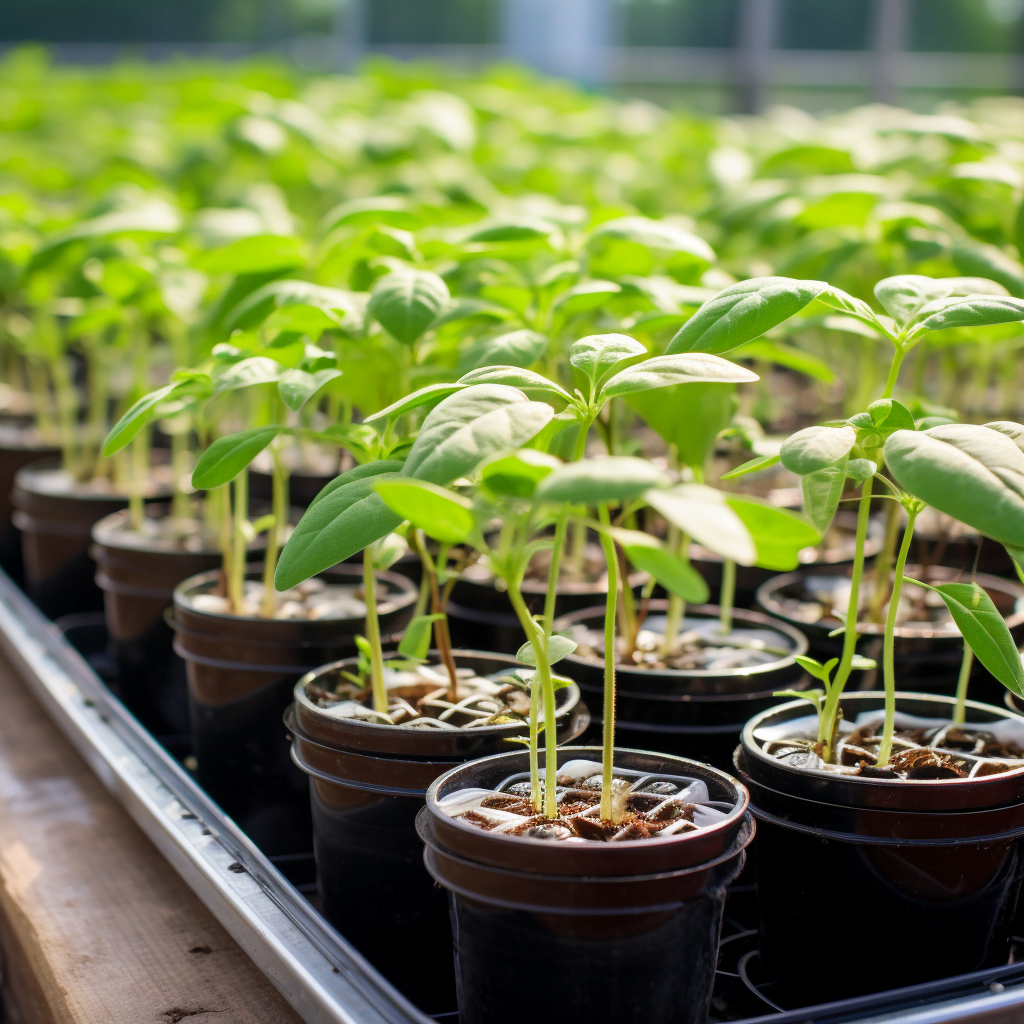
Conclusion
Growing sweet potatoes in optimized hydroponic systems allows for rapid growth, excellent yields, and produce that tastes as good or better than field-grown tubers. Follow this guide covering everything from choosing the right equipment to harvesting high-quality potatoes, and soon you’ll be enjoying bucketloads of homegrown sweet potatoes.
With the information provided throughout this comprehensive resource, you now have all the knowledge needed to start cultivating sweet potatoes hydroponically. Let me know if you have any other questions arise as you delve into hydroponic sweet potato production!
